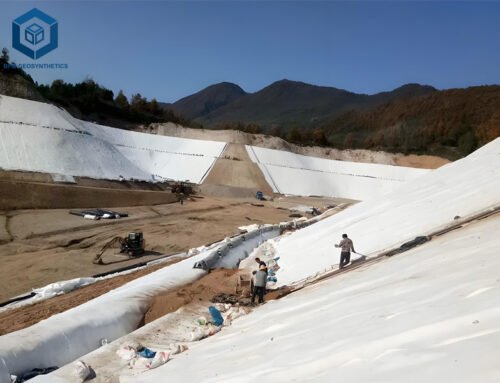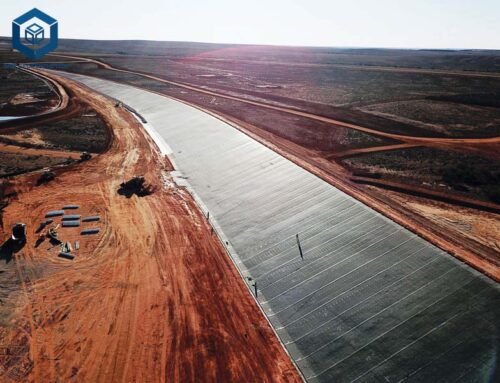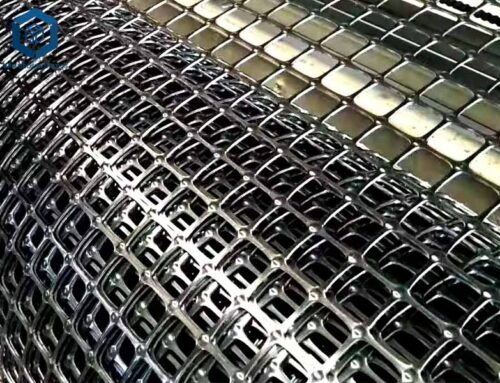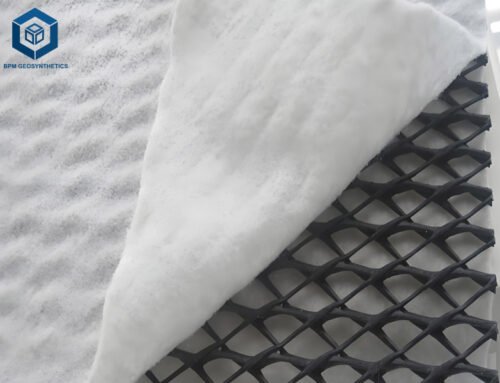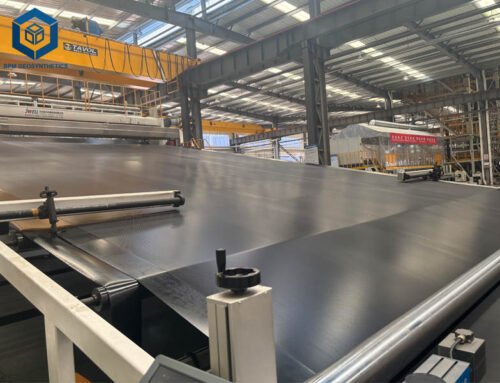HDPE Geomembrane Welding Machine as know as geomembrane welding machine, is a specialized piece of equipment designed for the welding and joining of High-Density Polyethylene (HDPE) geomembranes.BPM Geosynthetics is an expert in this field with more than 10 years of experience, a professional construction team and high-quality product equipment.
1. What Is A HDPE Geomembrane Welding Machine?
HDPE Geomembrane Welding Machine is a specialized piece of equipment designed for the welding and joining of High-Density Polyethylene (HDPE) geomembranes. These machines are commonly used in civil engineering projects where geomembranes are employed for waterproofing, such as in landfill capping systems, waste management facilities, pond liners, and other applications requiring a durable and impermeable barrier. The machine contains a heating element that can reach temperatures sufficient to melt the HDPE material, allowing it to fuse together when pressed. Advanced models may include digital controls for temperature, speed, and pressure to ensure consistent and high-quality welds. After heating, pressure is applied to the melted surfaces to bond them together, creating a strong and leak-proof seam. Proper operator training and adherence to manufacturer guidelines are essential for successful outcomes.


2. What Are Types Of HDPE Geomembrane Welding Machine?
HDPE Geomembrane welding machines can be roughly divided into the following categories according to different working principles and functional characteristics:
2.1 Hot air welding machine
The hot air welding machine uses hot air to heat the edge of the geomembrane, melt it, and then bond the edges of the two geomembranes together. This method is suitable for thicker geomembranes and large-area welding.
2.2 Hot melt welding machine
The hot melt welding machine applies a hot melt rod or hot melt tape to the edge of the geomembrane to melt it and then bond it together. This method is suitable for projects with high requirements for welding quality.
2.3 High frequency welding machine
The high frequency welding machine uses the principle of high frequency electric field to heat and press the edge of the geomembrane together to achieve welding. This method has fast welding speed and good effect, and is suitable for projects with special requirements.
2.4 Extrusion welding machine
The extrusion welding machine extrudes molten plastic material to bond the edges of the geomembrane together. This method is suitable for thicker geomembranes and projects with high requirements for welding strength.
2.5 Handheld welding machine
This type of welding machine is easy to operate and is suitable for some small-area or small-part geomembrane welding tasks.
Each type of geomembrane welding machine has its applicable scenarios and advantages. When choosing, it is necessary to make a reasonable choice based on the specific engineering needs and requirements.Among them, hot air welding machine, hot melt welding machine and extrusion welding machine are several types of welding machines that we commonly use in geomembrane welding projects.
3. What Are Characteristics Of HDPE Geomembrane Welding Machine?
When it comes to High-Density Polyethylene (HDPE) geomembrane welding machines, there are specific characteristics and features tailored to the welding requirements of these impermeable liners used in various applications. Here are the key characteristics of an HDPE geomembrane welding machine:
3.1 Welding Methods
- HDPE geomembrane welding machines are designed to support various welding methods. These include hot wedge welding, extrusion welding, and hot air welding. They are commonly used for joining HDPE geomembrane sheets.
3.2 Heating Element
- These machines are equipped with a heating element that generates the necessary heat to melt the HDPE geomembrane surfaces for fusion during the welding process.
3.3 Temperature Control
- Precise temperature control is crucial for fusing geomembrane sheets. HDPE welding machines have mechanisms to maintain the best welding temperature.
3.4 Pressure Application
- Pressure application ensures a strong bond between the sheets. Geomembrane welding machines have pressure rollers or mechanisms for consistent pressure during welding.
3.5 Welding Speed
- The welding speed of the machine can impact the quality and efficiency of the welding process. Adjustable welding speeds allow operators to optimize the welding process based on the specific requirements of the project.
3.6 Control Panel
- Modern HDPE welding machines have user-friendly controls. They feature digital displays and settings for temperature, speed, and pressure.
3.7 Guides and Clamps
- The machines have guides and clamps for positioning. They hold the sheets securely during welding, ensuring accurate seam alignment.
3.8 Versatility
- Some welding machines are versatile. They can handle different geomembrane thicknesses and types for various projects.
3.9 Safety Features
- Safety features like thermal protection, stop buttons, and grounding are crucial in welding machines. They ensure operator safety during use.
3.10 Mobility
- Portability features such as wheels or handles may be included in some HDPE geomembrane welding machines for ease of transportation within worksites.


4. How To Choose Right HDPE Geomembrane Welding Machine?
Choosing the right HDPE Geomembrane Welding Machine involves considering several factors to ensure that you get a machine that meets your specific needs. Here are some key considerations:
- Welding Method: Determine which welding method (hot wedge, extrusion, or hot air) is most suitable for your project requirements.
- Material Thickness: Ensure the machine can handle the thickness of the geomembrane you will be working with.
- Machine Size and Portability: Consider the size of the machine and whether it needs to be portable for on-site welding.
- Temperature Control: Look for precise temperature control to ensure proper fusion of the geomembrane sheets.
- Pressure Application: The machine should have a reliable system for applying consistent pressure during welding.
- User Interface: A user-friendly control panel with digital displays can make operation easier and more accurate.
- Safety Features: Make sure the machine has essential safety features like thermal overload protection and emergency stop buttons.
- Versatility: If you will be working with different types of geomembranes, choose a machine that offers adjustability for various materials.
- Quality and Durability: Select a machine that is built to last and comes from a reputable manufacturer with good customer service.
- Maintenance and Support: Consider the maintenance requirements and availability of technical support for the machine.
- Budget: Evaluate the cost of the machine against your budget while considering its value in terms of performance and longevity.
- Brand Reputation: Research the brand’s reputation in the market and customer reviews for the specific model you are considering.
- Warranty and Guarantees: Check the warranty period and any guarantees offered by the manufacturer.
5. Summary
When choosing an HDPE Geomembrane Welding Machine, consider the welding method that suits your project. Evaluate the machine’s ability to handle different geomembrane thicknesses and its portability for on-site welding. Pay attention to temperature control, pressure application, and the user interface for weld quality. Safety features, such as thermal protection and emergency stops, are essential. Consider the machine’s adaptability to various geomembranes and the brand’s reputation. Lastly, set a budget that includes performance, longevity, and warranty considerations. Ensure compliance with industry standards and arrange for proper operator training.
BPM GEOSYNTHETICS is a leading manufacturer, wholesaler, supplier and exporter of geosynthetics and related equipments at one stop.If you have any further questions, please feel free to contact us.

